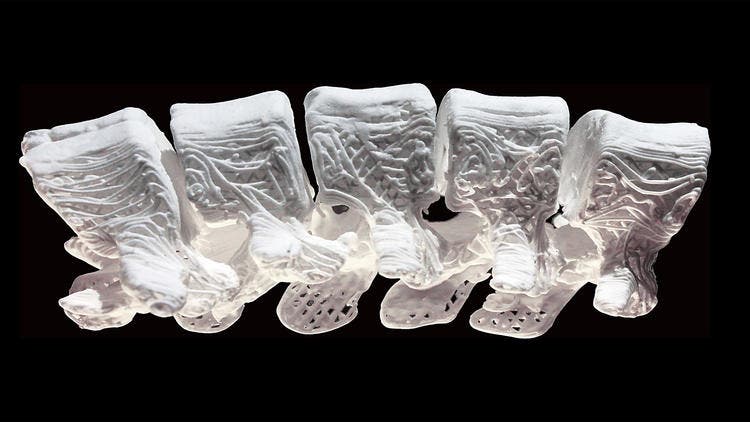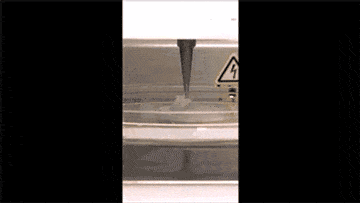
Damaged bones are some of the most challenging body parts for doctors to repair or replace. Patients who need bone grafts require these to be biocompatible, but also match the tensile strength, stiffness, and elasticity of their lost bones. Northwestern University researchers think found an elegant solution to this complex medical intervention: 3-D print new artificial bones. The team found just the right mix of materials that enables their so-called ‘hyper-elastic bones’ to not only fit perfectly because these are custom tailored, but also safely and comfortably.
[ALSO SEE] The pen that 3-D prints bone on site
The new hyper-elastic bone is mostly made of hydroxyapatite, a naturally occurring mineral packed with calcium and phosphate. Reconstructive surgery has been using this material as scaffolds implanted under the skin to promote bone growth for many years, but hydroxyapatite alone is brittle and stiff which makes customization and implant surgeries challenging.
That’s why Northwestern University researchers made a composite material that not only includes hydroxyapatite (90% weight/weight), but also other substances like collagen which is soft. The resulting composite now can withstand all sorts of forces without breaking and is flexible enough to return to its initial state.

Tests suggest the hyper-elastic bone can be compressed to up to 50% of its original height and still return to its original shape. Being highly porous, the material is also ideal for use as a bone graft because blood vessels can easily grow inside or on the implant.
“The first time that we actually 3D printed this material, we were very surprised to find that when we squeezed or deformed it, it bounced right back to its original shape,” Ramille Shah, one of the study’s authors and an assistant professor of materials science at Northwestern University, said during a press call.
Shah and colleagues performed a range of experiments to test their 3-D printed bone. In one test, they placed human stem cells into various scaffolds 3-D printed using the hyperelastic bone material. They found the cells grew without difficulty, filling all the available space in the material’s pores within weeks and later started to produce their own bone minerals. Typically, this process takes two to three times as much time.
In tests made on rats, the 3-D printed implant sped up spinal fusion. When working with macaque monkeys which had skull birth defects, the researchers saw bone regrowth start in only four weeks. This prompted Shah to claim that their composite material might become useful for those born with craniofacial birth defects, besides typical broken bone procedures.
To round things up, this hyper-elastic artificial bone is cheap, easy and fast to make, and can be stored without degrading for at least one year. ]
“HB did not elicit a negative immune response, became vascularized, quickly integrated with surrounding tissues, and rapidly ossified and supported new bone growth without the need for added biological factors,” the researchers conclude in their paper published in the journal Science Translational Medicine.






